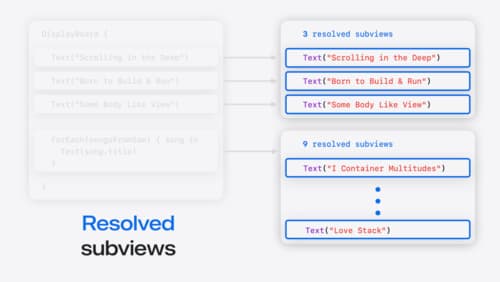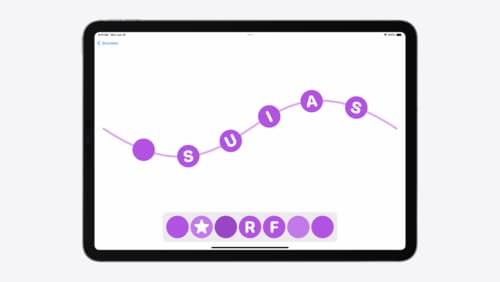Explain branching in SwiftUI
Asked on 2024-08-03
1 search
Branching in SwiftUI can be understood through its declarative nature and the way it handles state-driven views. Here are some key points from the SwiftUI essentials session:
-
Declarative Syntax: SwiftUI views are described declaratively. You specify what the UI should look like, and SwiftUI takes care of rendering it. This means you describe the state and the UI updates automatically when the state changes.
-
Composition: SwiftUI encourages breaking down views into smaller, reusable components. This is efficient because views are value types and not long-lived objects. This compositional approach allows you to organize your code without compromising performance.
-
State-Driven: SwiftUI views are driven by state. When the state changes, SwiftUI automatically updates the UI. This eliminates the need for manual updates and reduces boilerplate code.
-
Adaptive Views: SwiftUI views can adapt their behavior based on the state. For example, a view can change its appearance or functionality when a certain condition is met.
For a more detailed explanation, you can refer to the SwiftUI essentials session, which covers the fundamentals of views, their declarative nature, and how they are composed and driven by state.

Demystify SwiftUI containers
Learn about the capabilities of SwiftUI container views and build a mental model for how subviews are managed by their containers. Leverage new APIs to build your own custom containers, create modifiers to customize container content, and give your containers that extra polish that helps your apps stand out.

SwiftUI essentials
Join us on a tour of SwiftUI, Apple’s declarative user interface framework. Learn essential concepts for building apps in SwiftUI, like views, state variables, and layout. Discover the breadth of APIs for building fully featured experiences and crafting unique custom components. Whether you’re brand new to SwiftUI or an experienced developer, you’ll learn how to take advantage of what SwiftUI has to offer when building great apps.

Enhance your UI animations and transitions
Explore how to adopt the zoom transition in navigation and presentations to increase the sense of continuity in your app, and learn how to animate UIKit views with SwiftUI animations to make it easier to build animations that feel continuous.
